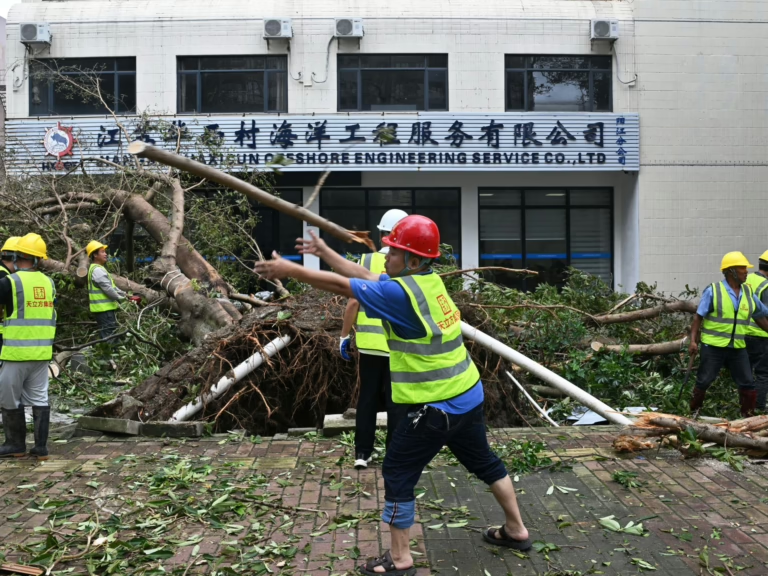The diminished storm continues to pose significant rainfall risks across Vietnam and Southeast Asia.
Taiwan has revised the fatality count from Typhoon Ragasa, reducing it from 17 to 14 as the storm, now weakened, progresses through China en route to Vietnam.
On Thursday, the Hualien County Fire Department clarified that some victims had been mistakenly counted twice amid ongoing assessments of the typhoon’s impact on the island’s remote eastern region.
Meanwhile, the tally of missing individuals has been significantly decreased from 152 to 33, as rescue teams continue their efforts to locate those unaccounted for.
The fatalities primarily resulted from intense rainfall triggered by the typhoon’s outer bands in Hualien County, which caused a mountain barrier lake to overflow, sending a destructive flood surge into the town of Guangfu.
Taiwan’s Premier, Cho Jung-tai, emphasized the need for a thorough investigation into the deaths, most of which occurred on ground floors, and urged authorities to act swiftly to capitalize on the critical rescue period to find the missing persons.
Although Guangfu’s railway station has resumed service, the main highway remains inaccessible due to floodwaters washing away a vital bridge.
President William Lai Ching-te has committed a month’s salary to support relief operations for those displaced by the disaster and plans to visit the affected areas later on Thursday.
Recovery Efforts in China
Typhoon Ragasa made landfall in Guangdong province late Wednesday, bringing winds reaching 145 km/h (90 mph) after passing Hong Kong.
Residents in southern China began the cleanup process on Thursday, with AFP reporters observing uprooted trees and scattered debris along the streets near Yangjiang city, the storm’s point of impact.
Fortunately, no fatalities linked to the storm have been reported by local authorities.
On Hailing Island, governed by Yangjiang, emergency crews worked to remove a large fallen tree obstructing a major roadway.
Hailing is a favored vacation destination, with many inhabitants depending on tourism for their livelihoods.
Prior to Ragasa’s arrival, officials had ordered closures of schools and businesses in at least ten southern cities, affecting millions of residents.
By Wednesday afternoon, approximately 2.2 million people in Guangdong had been relocated, though some cities have since begun easing restrictions on educational institutions and commercial activities.
According to Chinese state media CCTV, Ragasa made a second landfall as a tropical storm in Beihai, Guangxi, on Thursday morning.
The Chinese government has allocated nearly $49 million to support rescue and recovery operations, as reported by the Xinhua news agency.
By Thursday morning, Ragasa’s maximum sustained winds had diminished to 65 km/h (40 mph), with forecasts predicting the storm will eventually dissipate, though it remains a significant source of heavy rainfall for Vietnam and other Southeast Asian regions.























